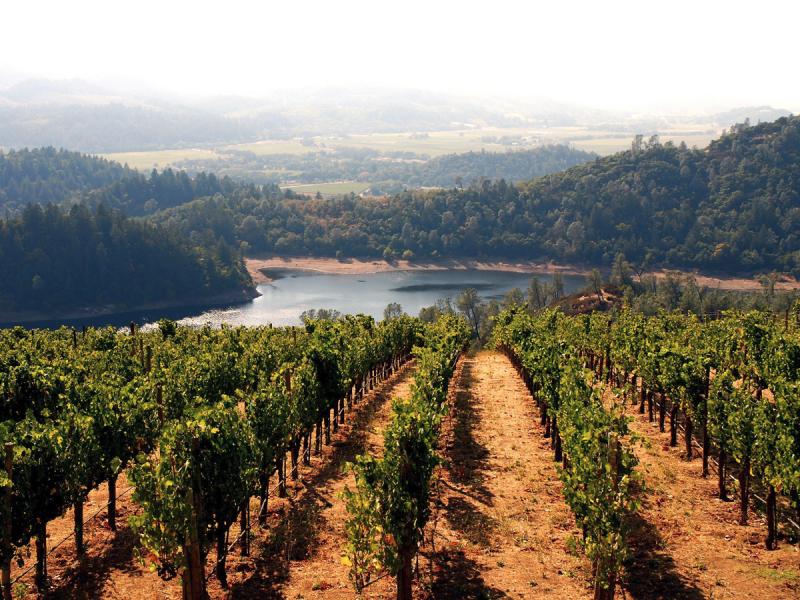National weather watchers are likely aware that California is suffering huge flooding- and fire-induced mudslide issues. Much of the low-lying land around the Russian River is underwater. Guerneville and Forestville are particularly hard hit. This does not portend well for the Sonoma wine farmers. The Russian River in Napa is at its highest flood levels since 1995; many major roads are closed. Since the Sierra also has a massive snow pack and all the reservoirs are full, it is likely this high-water issue may continue. The Oxbow-Hickson-Bakke Levee helped to keep down problems. Friends in both Sonoma and Napa are struggling. Please say a prayer they recover. In Oregon, 10 counties have been closed down. My friends out there in the McMinnville area are all located on higher slopes with gradual terrain. They have avoided any serious damage. Low-lying valley floor, coastal vineyards and arbors are saturated. It appears that most Washington state vineyards are secure at this time.
Winos believe that vineyards were initially established in Portugal around 2000 BCE. I am amazed how many wines are still foot-trodden. The literature does indicate many use the old-fashioned way of making their wine, and I’m on board for that. The Vinho Regional Alentejano borders Spain. A great deal of the world’s cork supply is harvested in the region. Many of the locals have old English names, as found in Porto and Douro. The relationship between Great Britain and Portugal originated in 1386 with the Treaty of Windsor and was reaffirmed in 1703 with the Methuen Treaty. Today’s United States were still colonial at the time, barely removed from Merry Olde England. In fact, much of the wine consumed in America was from Portugal. Madeira was discovered due to the shipping of Portuguese wines through the tropics and the restrictions of the British Navigation Acts. It was one of the principal drinks of the colonies’ upper crust.
Herdade do Rocim is very dark ruby with dark fruit aromas, a pleasing minerality, integrated tannins and balanced acidity, $20 bottle; it won gold at Concours Mondial, Brussels 2018. Herdade dos Grous Moon Harvested 2017, $25, is produced biodynamically. Dark and brooding, it is huge, with plum, cherry, chocolate and coffee aromas. Rich with fine tannins and balsamic flavors, it finishes long and clean. Needs some shelf time; 88 points McD under $27. Upscale a bit with good QPR is Julio Bastos Dona Maria Grande Reserva 2012. It won silver at IWC in 2018; 91 McD under $50. It’s a blend of 50 percent Alicante Bouschet, Petit Verdot, Syrah and Touriga Nacional.
Thank you to the producers for including descriptors on the back label of Herdade de Sao Miguel 2015, smart marketing to break into the U.S. markets. What a lovely wine: 100 percent Alicante Bouschet, it is dark ruby to let us know it will age. Violets, barrel spice and ripe fruit aromas lead to a round, balanced palate that shows blackberry, tea and cherry flavors riding a crisp but smooth tannic frame. It is drinking well now but will keep thru 2022 easily. I think it will be better than the 92-point 2013; 93 McD, under $25 add a price point. This is a great buy.
As usual, Cline Ancient Vines Zinfandel from California won accolades. A consistent winner, the 2016 can be found under $14. Rated No. 40 on WS 2018 Top 100 and 91 points; McD says 93 due to 2 price points. Look for strawberry, coffee and oak-driven vanilla aromas. On the palate, blackberry and white pepper ride a proper acidity and soft tannin frame. The finish has a subtle plum and floral note. Drinking well now but has the wherewithal to cellar for three or four years. Cline makes at least five bottlings of Zin. If you spy a Lodi label 2015, it is a big bargain, 91 points, and usually costs under $11. Fred Cline, one of the original Rhone Rangers, is top of the line making Zins.
Napa Cab drinkers should read the article below by W. Blake Gray concerning the 2017 Premiere Napa Valley auction. It will give you some clues on the general demeanor of the vintage. Of particular note was that three major labels in the over $1,000/bottle range didn’t show their wine. Draw your own conclusions after reading: www.wine-searcher.com/m/2019/02/napa-auction-snatches-victory-from-defeat. Please read the entire paper first.
















































